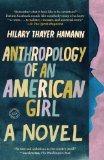Summary | Excerpt | Reading Guide | Reviews | Read-Alikes | Genres & Themes | Author Bio

A novel on the anxiety and disconnection of post-9/11 America, on the insidiousness of racism, the blind-sidedness of war, and the recklessness thrust on others in the name of love.
In her best-selling story collection, Birds of America (“[it] will stand by itself as one of our funniest, most telling anatomies of human love and vulnerability” —James McManus, front page of The New York Times Book Review), Lorrie Moore wrote about the disconnect between men and women, about the precariousness of women on the edge, and about loneliness and loss.
Now, in her dazzling new novel—her first in more than a decade—Moore turns her eye on the anxiety and disconnection of post-9/11 America, on the insidiousness of racism, the blind-sidedness of war, and the recklessness thrust on others in the name of love.
As the United States begins gearing up for war in the Middle East, twenty-year-old Tassie Keltjin, the Midwestern daughter of a gentleman hill farmer—his “Keltjin potatoes” are justifiably famous—has come to a university town as a college student, her brain on fire with Chaucer, Sylvia Plath, Simone de Beauvoir.
Between semesters, she takes a job as a part-time nanny.
The family she works for seems both mysterious and glamorous to her, and although Tassie had once found children boring, she comes to care for, and to protect, their newly adopted little girl as her own.
As the year unfolds and she is drawn deeper into each of these lives, her own life back home becomes ever more alien to her: her parents are frailer; her brother, aimless and lost in high school, contemplates joining the military. Tassie finds herself becoming more and more the stranger she felt herself to be, and as life and love unravel dramatically, even shockingly, she is forever changed.
This long-awaited new novel by one of the most heralded writers of the past two decades is lyrical, funny, moving, and devastating; Lorrie Moore’s most ambitious book to date—textured, beguiling, and wise.
It's hard to fight the urge to scrawl "love love love" in red crayon across the page, or to make a beribboned valentine full of sappy verse in lieu of actually reviewing Lorrie Moore's new book. She tops all my lists (top 10 books, top 5 writers, books you'd take to a deserted island), and my copies of her novels and short stories are filled with bookmarked passages, lovingly read over and over again. Is A Gate at the Stairs her best work? No. But it may be the one that finally brings her the readership she deserves...continued
Full Review
(1045 words)
This review is available to non-members for a limited time. For full access,
become a member today.
(Reviewed by Lucia Silva).

If you liked A Gate at the Stairs, try these:

by Paul LaFarge
Published 2012
A decade after the publication of Haussmann, or the Distinction, his acclaimed novel about nineteenth-century Paris, Paul La Farge turns his imagination to America at the dawn of the twenty-first century.

Anthropology of an American Girl
by Hilary Thayer Hamann
Published 2011
A moving depiction of the transformative power of first love, Hamann's first novel follows Eveline Auerbach from her high school years in East Hampton, New York, in the 1970s through her early adulthood in the moneyed, high-pressured Manhattan of the 1980s.